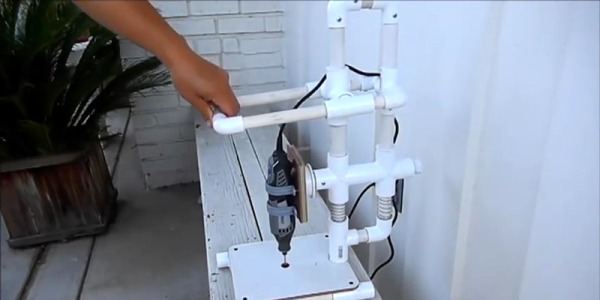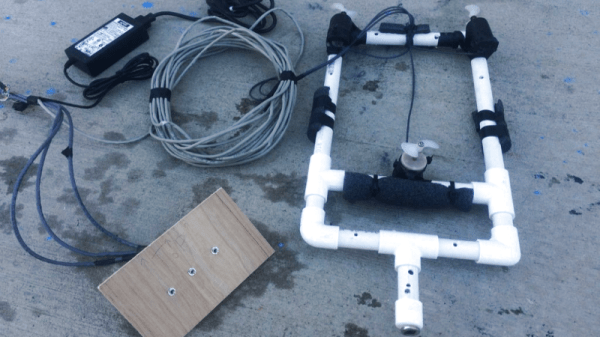[NightHawkInLight] a.k.a. [Ben] recently built an awesome high power air cannon out of PVC pipe. PVC air cannons are great, and everyone should build one of these at some point in their life, but what really makes this build exceptional is the valve. [Ben] created a piston valve for this cannon that can be built with parts sourced from your local home supply store. Anyone can build this thing, and everyone should.
Instead of using a ball valve or other such contrivance to dump air directly from a reservoir into the chamber of this PVC air cannon, [Ben] is using a much more clever design. This is a barrel sealing PVC air cannon, with a moving piston sealed against a rubber hose clamp in the barrel. Adding air through the fill valve moves the piston forward, allowing air to leak into the reservoir. The air supply is then disconnected, and the trigger released causing the piston to move backward. This releases all the air in the reservoir into the barrel instantaneously, resulting in faster ping pong balls and potatoes.
The original trigger for this high power PVC air cannon used a simple ball valve for the trigger. [Ben] didn’t like this solution – it was hard to open and somewhat unergonomic. The ball valve trigger has since been replaced with a valve from a sprinkler system, giving this high power PVC air cannon a fancy brass trigger. It looks awesome, and can kill a watermelon from twenty yards. What more could you want in a high power PVC air cannon?
You can check out the videos for this build – including a guide for the clever piston valve – below.
Continue reading “Build Your Own High Power Air Cannon Out Of PVC” →


















